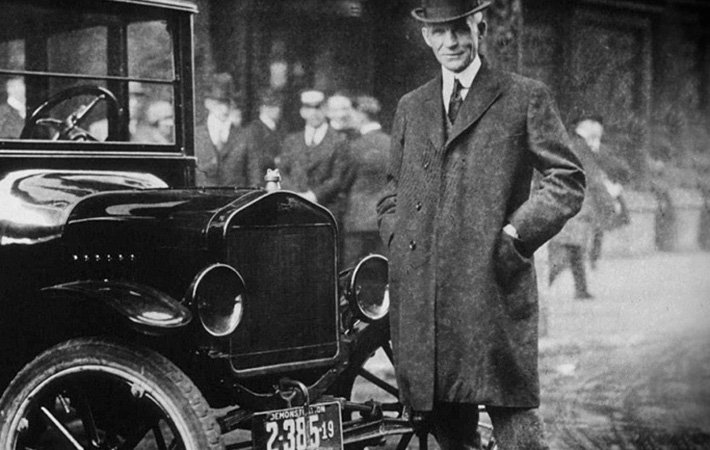
The customer is always right, or so we're told.
For decades this idea has underpinned customer satisfaction for businesses around the world.
"Le client n'a jamais tort", chant the French. "Der Kunde ist König", shout the Germans. But no matter the country or phrasing, the concept remains the same. The customer is the focal point.
The key to keeping your company customer-focused? Experience.
Whether you're a company with millions of customers around the world or a thrifty startup who landed their first paying customer—experience and satisfaction are the main things your customers want you to focus on. Whether they know it or not.
Walker researchers even predict customer experience will overtake price & product as the key differentiator.
At this point, it might be useful to clear up exactly what we mean by customer experience. Is it the product features? Is it another term for "customer service"? Well, the truth is it's both.
It's everything. Every touch point, every blog post, every interaction with a member of your team. And yes, it's most definitely how well your product "fits".
Every part of our brand influences the customer experience. From the marketers crafting sensational content—you're welcome 😉—and the product team who build your product. Right through to the heroic support and customer feedback teams.
It's clear we need to keep the customer experience fresh and exciting. Natural logic seems to suggest looking at building out a feature roadmap and listening to valued customers to do so. The big question is whether listening to your users is the right thing to do.
After all, do they even know what they want?
"If I had asked people what they wanted, they would have said faster horses."
— (Probably not) Henry Ford
Whether users know what they want has been a polarizing question in business for decades. This isn't a new concept, not by a long shot.

Although there's no evidence pointing the well-worn quote to Henry Ford, innovation aficionados love to drop it into conversations. It's a great way to justify doing something because you can while disregarding whether you should.
As an idea, it can go a little too far. Sometimes, creators use it to mean ignoring your users and going with your gut instead. The idea is still interesting, though. And it speaks against a tradition of customer-focused businesses, allowing innovators to, well, innovate.
That's the role, after all—to think outside the box. You are the expert.
But never listening to your customers is a risky game. Your ego ends up leading your product development down a short runway. Deploy one feature that's not conducive to your customer experience and your product could be toast.
Talking to users can bring new perspectives and highlight a plethora of pain points. This, in turn, can breed a ton of new, possible features. But you can't iterate on every single request. Because, once again, you'll find yourself plagued by feature creep and a slow, bloated product. And customers don't want that.
At this point, the solution seems pretty simple. As with most things, the best approach is somewhere between the two.
It's common sense to stop thinking of the user feedback loop as a mutually exclusive scenario where users either know or don't know what they need. Chances are they know where some of their struggles are and have some idea of what could work as a solution for them.
As Carol Roth points out, while they might not have asked Ford for a car, "customers would probably have told Ford exactly what they wanted -- specifically, a faster mode of transportation."
The focus shouldn't be on Ford's—read: our—customers for knowing or not knowing. It's possible the onus lies with us to ask the right questions of our customers. And to find the right questions, we need to observe their behavior.
Ignore the vocal minority and observe everyone
Observation is critical to finding valuable features for your customer base. As Jakob Nielsen notes, "self-reported data is typically 3 steps removed from the truth". While it would be easy to take these loud voices as a representation of your user-base, the feedback on offer isn't always reliable.
The truth is, a few animated users also rarely speak for the majority. So building features off their demands can sometimes do more harm than good.
So, in short, the solution is to ignore them!
Instead of taking vocal users at their word, Nielsen suggests you "pay attention to what users do, not what they say."
To do this, dig deeper into your user analytics. Look at your usage data. Dive into your live chat support history. See where recurring bottlenecks and bugs appear.
Once you've a good understanding of recurring usability issues, then you can start asking your users the right questions. When you ask the right questions, user feedback can be the most useful tool to build out your feature roadmap.
It can also make you aware how walking the line between being customer focused and going off your own gut isn't easy. Sometimes you want to be right and your users to be wrong. Sometimes your ego is going to get hurt.
Sometimes you need to hold your hands up and accept you can never please every user. There is no shame in admitting your product isn't a good fit.
This is something we've learned to do at HelpDocs. It's had a huge impact on our customer satisfaction and growth.
Experience and the right product fit go hand in hand. Shoehorning features to appease a vocal minority is never the answer. Sure, we want as many customers as will have us, but not at the expense of the experience.
According to research, companies that excel at customer experience grow revenues 4-8% above the market. With 8 in 10 consumers also willing to pay more for a better customer experience, you're right to be seeking innovative ways to wow your user-base.
Just remember to avoid feature creep by focusing on understanding your user's actions. Identify the right questions and build valuable features for your entire user-base.